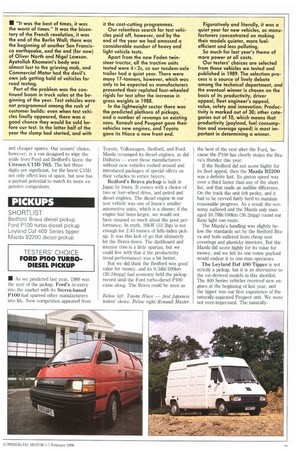TESTERS'
Page 40

Page 41

If you've noticed an error in this article please click here to report it so we can fix it.
CHOICE • "It was the best of times, it was the worst of times." It was the bicentary of the French revolution, it was the end of the Berlin Wall; there was the beginning of another San Francisco earthquake, and the end (for now) of Oliver North and Nigel Lawson. Ayatollah Khomeini's body was almost lost to the grieving mob, and Commercial Motor had the devil's own job getting hold of vehicles for road testing.
Part of the problem was the continued boom in truck sales at the beginning of the year. Test vehicles were not programmed among the rush of customer builds: even when test vehicles finally appeared, there was a good chance they would be sold before our test. In the latter half of the year the slump had started, and with it the cost-cutting programmes.
Our relentless search for test vehicles paid off, however, and by the end of the year we had amassed a considerable number of heavy and light vehicle tests.
Apart from the new Foden twinsteer tractor, all the tractive units tested were 4x2s, so our tandem-axle trailer had a quiet year. There were many 17-tonners, however, which was only to be expected as manufacturers presented their replated four-wheeled rigids for test after the increase in gross weights in 1988.
In the lightweight sector there was the predicted plethora of pickups, and a number of revamps on existing vans. Renault and Peugeot gave their vehicles new engines, and Toyota gave its Hiace a new front end. Figuratively and literally, it was a quiet year for new vehicles, as manufacturers concentrated on making their models quieter, more fuelefficient and less polluting.
So much for last year's theme of more power at all costs.
Our testers' choices are selected from those vehicles we tested and published in 1989. The selection process is a source of lively debate among the technical department, and the eventual winner is chosen on the basis of its productivity, driver appeal, fleet engineer's appeal, value, safety and innovation. Productivity is marked out of 30; other categories out of 10, which means that productivity (payload, fuel consumption and average speed) is most important in determining a winner.
































































































































